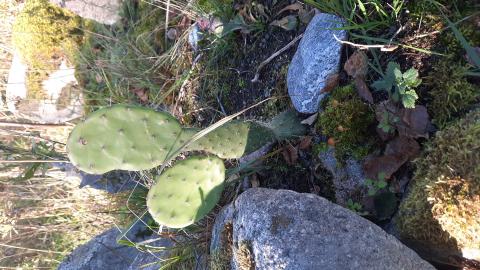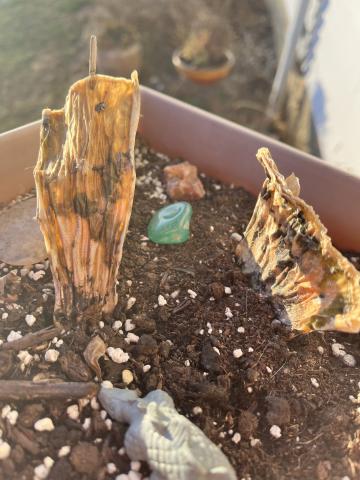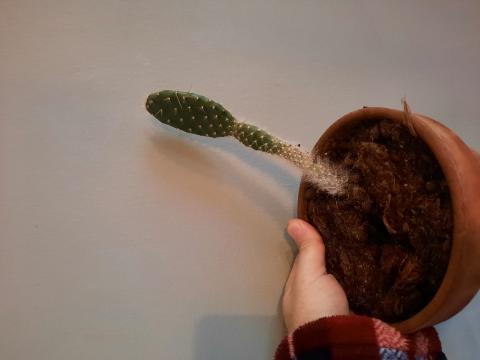I could not reply to your comment for some reason so decided to do a separate post:
Hello, I have Opuntia humifusa but they are shriveled and dormant. I don't mind helping you out this spring when they start growing again. I am in zone 6b.
I can tell everyone right now that Opuntia ficus-indica will not live outdoor in 6b. Unless, perhaps, you somehow provide shelter for it during the cold? Maybe bring it inside. Mine died the very first freeze we got in November I mean deader than a door knob. I was testing it in both pots and directly in the ground. The pads in the ground are south facing behind a barn in soil that is very well draining. It is a hot spot and the pads there look dead too. But maybe the roots are alive? We shall see this spring. The pads in the pots look dead, dead, dead.
I should mention that the killing temperature was within the temperatures for zone 8. I think I lost my Opuntia ficus- indica because they were first year cuttings. The killing temp was around 19 degrees. USDA zone 8 lows are 10-20 depending on if 8a or 8b.
I am not finished testing though. I am going to get more pads and try covering them next winter a frost cloth or similar and some green Christmas lights (not led and if I can find them) to bring up the temp a bit. My pads were first year babies. Maybe a little older, more established plant would fair a better chance? Should be a fun experiment.
The photo is what a Opuntia ficus-indica does in freezing temps while in a pot.















